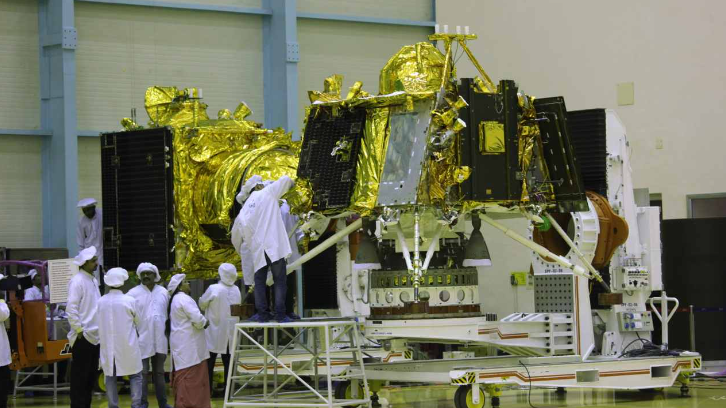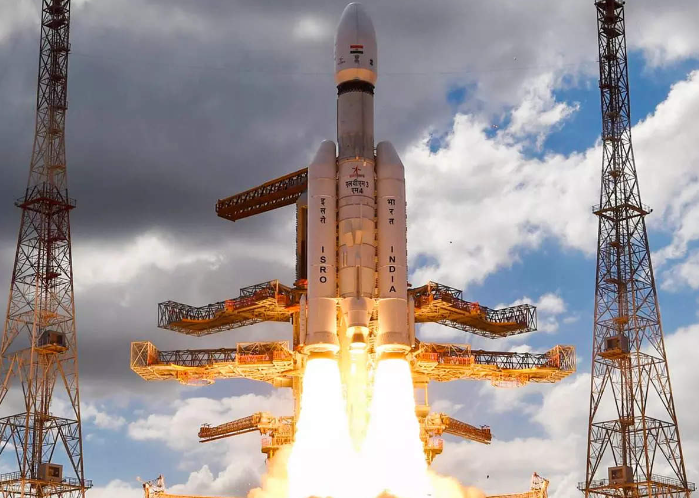INTRODUCTION
Chandrayaan-3, recently launched by ISRO has been a matter of immense pride. India’s space agency, the Indian Space Research Organisation (ISRO), has been at the forefront of space exploration, achieving impressive milestones with its Chandrayaan missions. Chandrayaan 1 and Chandrayaan 2 accomplished their objectives, and now, India eagerly looks forward to Chandrayaan 3 – a bold lunar expedition.
THE LEGACY OF CHANDRAYAAN MISSIONS
Chandrayaan 1, launched in 2008, marked India’s debut in lunar exploration, making history by confirming the presence of water molecules on the moon’s surface and showcasing India’s technological prowess. Following this triumph, Chandrayaan 2, launched in 2019, aimed for a soft landing on the lunar south pole but faced challenges during the final stages. Despite the setback, Chandrayaan 2’s orbiter provides valuable scientific data.
OBJECTIVES OF CHANDRAYAAN-3
Chandrayaan 3‘s primary objective is to build upon the achievements of its predecessors and accomplish a successful soft landing on the lunar surface. The mission is to explore the south pole region, which holds immense scientific significance due to potential water ice deposits. Key objectives include:
- Soft Landing Technology: Chandrayaan 3 aims to demonstrate ISRO’s expertise in soft landing technology, a critical aspect for future lunar and planetary missions.
- In-situ Scientific Studies: The mission will carry advanced scientific instruments to analyze lunar soil and study its mineral composition, further enriching our understanding of the moon’s geological history.
- Mapping Water Ice: Investigating the presence and distribution of water ice on the moon is vital for future space exploration endeavors. Chandrayaan 3 seeks to map and study these water ice resources, which could play a crucial role in supporting future lunar missions.
- Enhanced Rover Mobility: Chandrayaan 3 will deploy an upgraded rover with enhanced mobility to traverse the lunar terrain efficiently and gather data from diverse locations.

OVERCOMING CHALLENGES
Chandrayaan 3, like any space mission, faces its share of challenges. ISRO has taken valuable lessons from past missions and setbacks, using them to strengthen and refine the upcoming mission.
The Chandrayaan missions have instilled a sense of pride and enthusiasm among Indians. The successful completion of Chandrayaan 3 will further bolster India’s standing in the global space community, showcasing the nation’s technological prowess and commitment to exploring the cosmos.
This mission is not merely a standalone mission but a stepping stone for India’s future space ambitions. The knowledge gained from this mission will be instrumental in planning and executing more complex missions to the moon, other planets, and beyond.
Chandrayaan 3 epitomizes India’s unwavering dedication to space exploration and scientific discovery. Our lunar expedition has the potential to significantly contribute to our understanding of the moon and space, inspiring generations and leaving an indelible mark in the annals of space exploration.
R&D IN INDIA
India has made considerable strides in the field of R&D, with numerous achievements to its credit. The country’s scientists and researchers have contributed significantly to various domains, including space exploration, pharmaceuticals, information technology, and renewable energy. India’s robust pool of human capital and its expertise in engineering and technology have attracted global attention and investment.

The Indian government has also recognized the importance of R&D and has taken steps to promote research activities. Public institutions like the Indian Institutes of Technology (IITs) and the Indian Institutes of Science (IISc) have been at the forefront of driving scientific research in the country. Moreover, the Department of Science and Technology (DST) and other funding agencies have been providing financial support to encourage innovation and discovery.
CHALLENGES FACING R&D IN INDIA
1) INSUFFICIENT FUNDING: While the government has shown commitment to R&D, the overall funding remains inadequate compared to leading global economies. India’s R&D expenditure as a percentage of GDP falls short of international benchmarks, limiting the scope and scale of research projects. A lack of substantial funding hampers the pursuit of ambitious and transformative research initiatives.
2) BRAIN DRAIN: Despite its wealth of talent, India faces the challenge of a brain drain, wherein many skilled researchers and scientists seek better opportunities abroad. Factors contributing to this trend include limited career growth prospects, inadequate research infrastructure, and a perception of higher recognition and remuneration overseas. The loss of talented individuals weakens the domestic R&D ecosystem.

3) INDUSTRY-ACADEMIA DIVIDE: Effective collaboration between academia and industry is essential for translating research into practical applications and fostering innovation. However, in India, the divide between these two sectors persists. The academia often struggles to connect with industry requirements, while businesses may not fully utilize the research potential available within the academic institutions.
4) RESEARCH INFRASTRUCTURE: Outdated research infrastructure and inadequate access to cutting-edge technologies hinder the progress of R&D in India. The absence of state-of-the-art facilities and equipment limits researchers’ ability to conduct advanced experiments and explore new frontiers in various fields.
5) BUREAUTIC CHALLENGES: Cumbersome bureaucratic processes and lengthy approval procedures create delays in research projects and discourage potential investors. Streamlining administrative procedures is necessary to create a more conducive environment for R&D initiatives.
CONCLUSION
In conclusion, the article highlighting the link between Chandrayaan 3 and the R&D sector in India showcases the country’s growing prowess in space exploration and technological advancement. Chandrayaan 3, India’s ambitious lunar mission, has undoubtedly served as a catalyst for the research and development sector, stimulating the growth of cutting-edge technologies and fostering collaboration between governmental agencies, academia, and private enterprises.
The journey towards Chandrayaan 3 has necessitated the development of sophisticated instruments, propulsion systems, and mission planning techniques, propelling India’s space research capabilities to new heights. Furthermore, the mission’s success has generated significant interest and enthusiasm among the nation’s youth, inspiring a new generation of scientists, engineers, and researchers to pursue careers in space exploration and related fields. This has had a transformative effect on India’s research and development ecosystem, fostering a vibrant and dynamic landscape that contributes not only to space endeavors but also to various other scientific domains.
-BHAWINI SRIVASTAVA
MUST READ: CULTURAL GLOBALIZATION OR MCDONALDIZATION?





